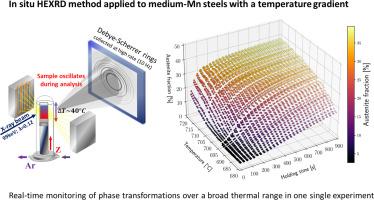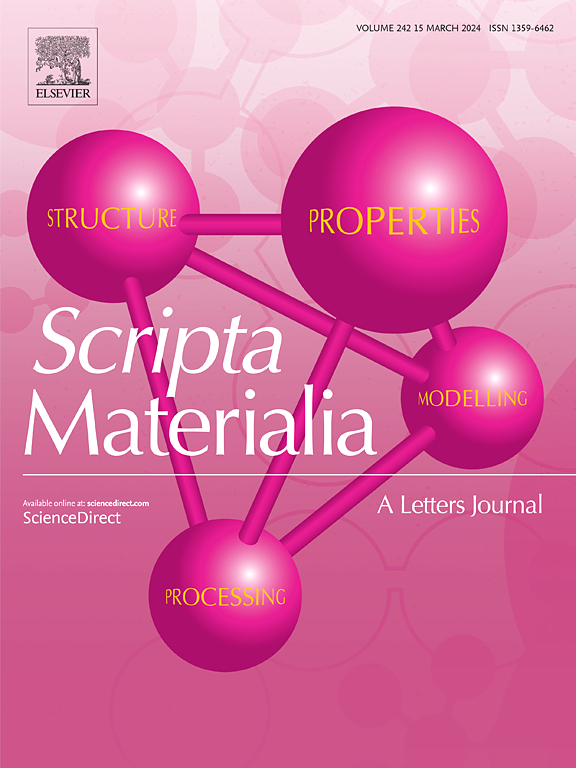组合优化方法在双相中锰钢中的应用
IF 5.6
2区 材料科学
Q2 MATERIALS SCIENCE, MULTIDISCIPLINARY
引用次数: 0
摘要
本研究介绍了一种新的组合方法,通过在临界间退火过程中耦合控制热梯度和原位高能x射线衍射(HEXRD)来优化双相中锰(Mn)钢的微观结构。单个样品的温度梯度(680-720°C)可以在一个实验中在广泛的热范围内实时监测相变。与等温实验相比,该方法提供了对奥氏体形成动力学和相稳定性的高分辨率洞察,能够准确识别最大限度保留奥氏体的最佳温度窗口。结果显示一个狭窄的最佳范围(~ 700-710°C),其中残余奥氏体馏分超过30%,超过传统方法的值。事后电子背散射衍射(EBSD)分析显示了稳定奥氏体的空间分布,突出了原位和非原位表征的互补作用。这项工作证明了基于梯度的组合冶金在加速工艺优化和支持高性能第三代先进高强度钢设计方面的潜力。本文章由计算机程序翻译,如有差异,请以英文原文为准。

Microstructure optimization by combinatorial approach applied to Duplex Medium Manganese steels
This study introduces a novel combinatorial approach for optimizing the microstructure of duplex medium-manganese (Mn) steels by coupling a controlled thermal gradient with in situ high-energy X-ray diffraction (HEXRD) during intercritical annealing. A temperature gradient (680–720 °C) across a single sample enables real-time monitoring of phase transformations over a broad thermal range in one experiment. Compared to isothermal trials, this method offers high-resolution insight into austenite formation kinetics and phase stability, enabling accurate identification of the optimal temperature window for maximizing retained austenite. The results reveal a narrow optimal range (∼700–710 °C) where retained austenite fractions exceed 30 %, surpassing values from traditional methods. Post-mortem Electron Backscatter Diffraction (EBSD) analysis showed the spatial distribution of stabilized austenite, highlighting the complementary roles of in situ and ex situ characterization. This work demonstrates the potential of gradient-based combinatorial metallurgy to accelerate process optimization and support the design of high-performance third-generation advanced high-strength steels.
求助全文
通过发布文献求助,成功后即可免费获取论文全文。
去求助
来源期刊

Scripta Materialia
工程技术-材料科学:综合
CiteScore
11.40
自引率
5.00%
发文量
581
审稿时长
34 days
期刊介绍:
Scripta Materialia is a LETTERS journal of Acta Materialia, providing a forum for the rapid publication of short communications on the relationship between the structure and the properties of inorganic materials. The emphasis is on originality rather than incremental research. Short reports on the development of materials with novel or substantially improved properties are also welcomed. Emphasis is on either the functional or mechanical behavior of metals, ceramics and semiconductors at all length scales.
 求助内容:
求助内容: 应助结果提醒方式:
应助结果提醒方式:


